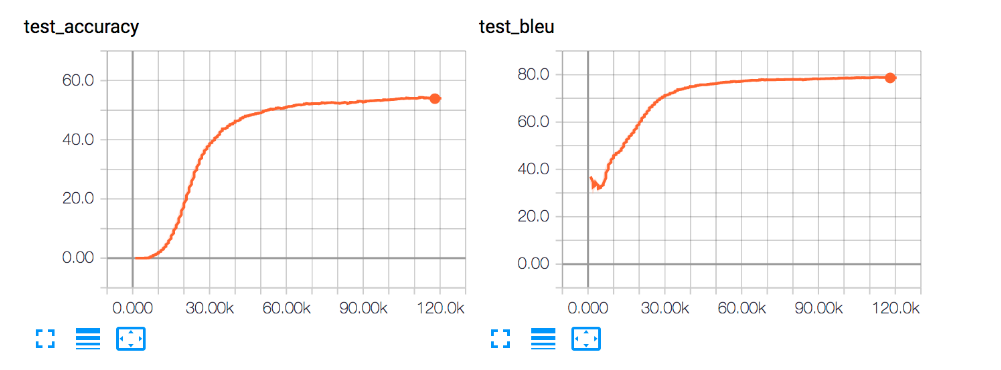In continuation with the problems with the version-1 of our model (which was getting 11% BLEU accuracy), I discussed the output with mentors. After a day or two of error analysis, we realised that there were few trivial problems with our dataset, due to which our BLEU score was so low:
- Double spaces: We found that there were double spaces in our dataset, and this may cause the neural network to learn different embeddings for each of the space; causing extra confusion for the NMT model.
- URIs with () paranthesis: Some of the URIs have ‘(‘ but since we encode ‘(‘, ‘)’ in SPARQL differently - for cases like order by(
) than that in NLQs - cases which contains entities like "dbr_Kalinga_(province)". These two paranthesis are being encoded, but in NLQs parathesis are a part of URI and need not be encoded (URIs should be as it is).
There were a few minor problems: such as some NLQs just did not made sense were noisy - for which we can keep a threshold frequency, but we chose to not do it right now.
After solving the above two troubles, we were good to prepare data and train the version-2 of our model. We both were hoping we get far better than mere 11%, because we guessed that “1” should be the major problem.

After again a wait of 9 hours, we got ~80% BLUE accuracy for our model and this marked the correctness and completeness of the project. Training Setup and Graph Analysis:
- We generated a dataset with 44k examples of NLQ-SPARQL, and distributed our data as 8:1:1 (train:dev:test).
- As the graph shows, we reach ~75% accuracy in just 40k epochs and the model convergence to 80% in the remaining 80k epochs.
- BLEU score signifies the quality of our translation. It compares our model’s target language translation with the expected SPARQL for the NLQ. 80% values means that our translation’s quality is 0.8 times the quality of an SPARQL expert.
- The test accuracy as the name suggests that around 60% of our NLQ queries exactly match with the required target SPARQL translation. z∘ Error Analysis:
- The major accuracy error occurs due to wrong entity mapping.
- There are still a lot of noisy properties in our dataset, which lead to bad translation - this can be improved by chosing a threshold over number of occurrences of each property and choosing only those which occur often in the training and testing data.
This marks the end of a end-to-end system which generates dataset automatically for NSpM learner.
With nearly two and a half week until the final deadline of GSoC tenure, we decided to try a ML experiment to test whether a machine learning model can learn compositionality. Precisely, the goal of this experiment is as follows: The goal is to train a model on data {‘a1’, …, ‘an’, ‘b’, ‘a1○b’, …, ‘an○b’, ‘c’,’d’} and test on data {‘c○d’}. The idea is to check whether the Neural MT model can learn how to translate composite NLQ queries into SPARQL by learning on other composite NLQ-SPARQL examples.
For now, me and my mentors mutually decided to perform our experiment on a simpler setting, where ‘d’ is equal to ‘b’.
Formally setting one becomes: Train a model on data {‘a1’, …, ‘an’, ‘b’, ‘a1○b’, …, ‘an○b’, ‘c’} and test on data {‘c○b’}.
For eg:
Trainset:
a1 := “what is the county of
Testset:
c○b := “where is the district of